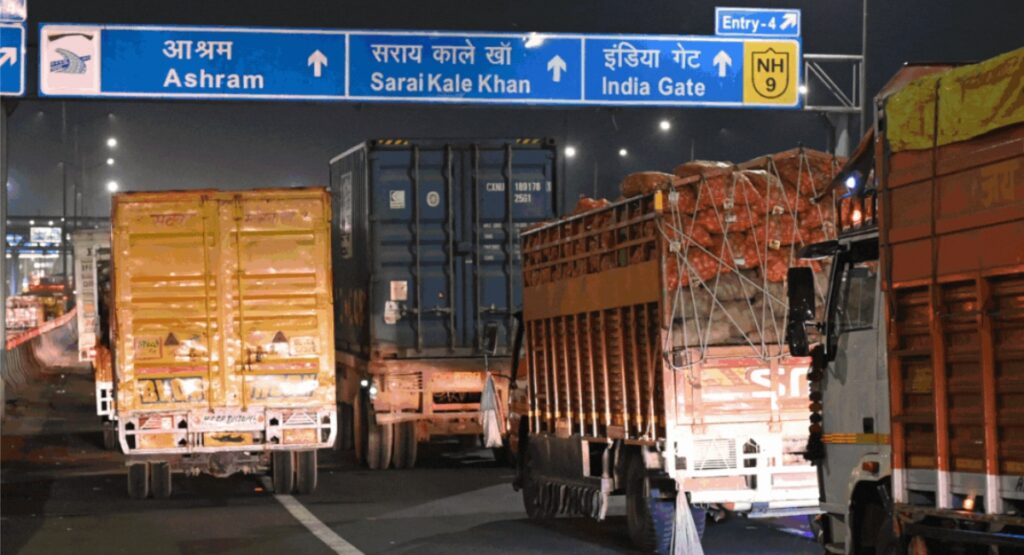
India’s transportation industry is the lifeblood of its economy, facilitating the movement of people and goods across the vast and diverse landscape of the country. However, in recent years, a significant challenge has emerged, posing a threat to the efficiency and reliability of the transport sector: route congestion. As the demand for transportation services soars, many key routes across India have become increasingly busy, leading to delays, economic losses, and mounting frustrations for commuters and businesses alike.
The Problem of Overcrowded Routes
The rapid urbanization and economic growth in India have resulted in an unprecedented increase in the number of vehicles on the road. This surge has put immense pressure on the existing transportation infrastructure, which is struggling to keep pace with the rising demand. The consequences are evident, with several critical routes in the country experiencing severe congestion.
Key Congested Routes in India
Golden Quadrilateral (GQ)
Routes: Delhi-Mumbai, Mumbai-Chennai, Chennai-Kolkata, and Kolkata-Delhi
The Golden Quadrilateral, which connects the major metros of Delhi, Mumbai, Chennai, and Kolkata, is one of the busiest road networks in India. This corridor, covering 5,846 km, is a lifeline for trade and commerce. However, with the growth in commercial traffic, especially heavy trucks, the GQ has become highly congested, leading to significant delays.
National Highway 44 (NH 44)
Route: Srinagar to Kanyakumari
NH 44, the longest highway in India, stretches from Srinagar in the north to Kanyakumari in the south, covering over 3,700 km. This highway connects major cities and industrial hubs, making it a vital artery for the transport sector. However, various stretches of NH 44, particularly near cities like Bengaluru, Hyderabad, and Nagpur, experience heavy traffic congestion.
Mumbai-Pune Expressway
Route: Mumbai to Pune
The Mumbai-Pune Expressway, one of India’s first expressways, is a crucial link between two major cities in Maharashtra. Despite being a high-speed corridor, the expressway often witnesses traffic snarls, especially during weekends and holidays, due to the high volume of vehicles.
Delhi-Meerut Expressway
Route: Delhi to Meerut
This newly constructed expressway was expected to ease the commute between Delhi and Meerut, reducing travel time significantly. However, the increasing population and rapid urbanization in the NCR (National Capital Region) have led to overcrowding on this route, making it one of the busiest corridors in the country.
Eastern Peripheral Expressway
Route: Connecting NH 1, NH 2, NH 8, and NH 24
Built to decongest Delhi by diverting heavy traffic away from the city, the Eastern Peripheral Expressway has ironically become another busy route. The expressway serves as a crucial bypass for vehicles traveling between Haryana, Uttar Pradesh, and Rajasthan, but it now faces congestion issues of its own.
Yamuna Expressway
Route: Greater Noida to Agra
The Yamuna Expressway is a key route for tourists heading to Agra’s Taj Mahal. However, during peak tourist seasons, and especially on weekends, the expressway becomes heavily congested. Accidents and breakdowns further exacerbate the delays.
Implications of Route Congestion
The consequences of congestion on these key routes are multifaceted. For the transport industry, delays result in higher operational costs, fuel wastage, and increased wear and tear on vehicles. For commuters, it means longer travel times, stress, and reduced productivity. Economically, the bottlenecks on these routes can lead to supply chain disruptions, affecting the timely delivery of goods and thereby impacting businesses and consumers alike.
Strategies for Mitigating Congestion
Addressing the issue of route congestion requires a multi-pronged approach:
Infrastructure Expansion: There is a need for further investment in expanding road networks, building more expressways, and adding additional lanes to existing highways to accommodate the growing traffic.
Public Transportation: Enhancing public transportation systems, including buses, metros, and trains, can reduce the reliance on personal vehicles and ease road congestion.
Traffic Management: Implementing intelligent traffic management systems using real-time data and AI can help in better managing traffic flows and reducing bottlenecks.
Alternative Routes: Developing alternative routes and bypasses around major cities can help in diverting traffic from overcrowded corridors.
Encouraging Off-Peak Travel: Incentivizing off-peak travel for freight and passenger vehicles can help in distributing traffic more evenly throughout the day.
